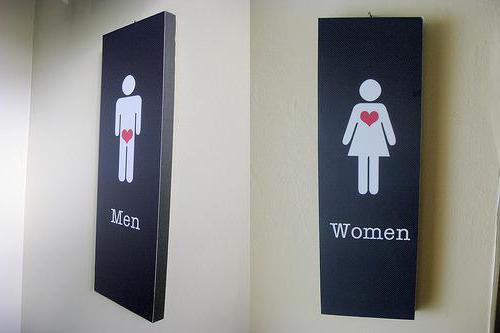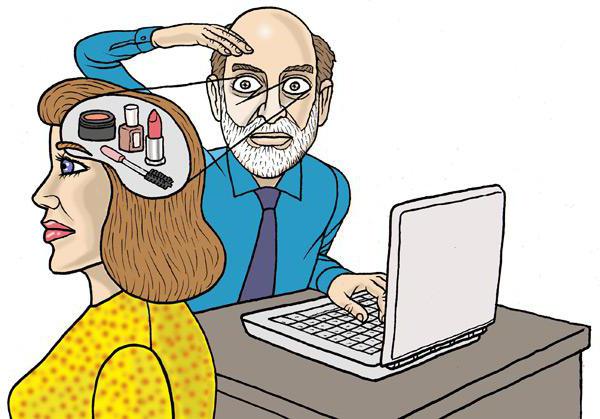Stereotype - what is it? The main types and formation of stereotypes
It is no secret that society lives in the world of stereotypes and speculations that arise due to a trivial lack of information (and in some cases - both knowledge). This article will tell about the origin of this term and what social stereotypes exist.
Stereotype: what it is
Stereotype - term from social psychology. In the broad sense of the word, these are certain beliefs that concern any category of people, as well as a certain model of behavior, which is used to determine the entire group of such people or their behavior as a whole. The stereotype is a concept that has a lot in common with such terms as "custom" and "tradition."
These thoughts or beliefs do not always reflect reality. In psychology and other sciences there are various concepts and theory of stereotypes that have common features, and also contain contradictory elements.
The origin of the term
It is necessary to know the etymology of this word to understand its essence. "Stereotype" comes from the Greek words στερεός (stereo) - "solid, hardened" and τύπος (type) - "impression", therefore, this word can be translated as "a solid impression of one or more ideas / theories."
This term was originally used mainly in the printing house. For the first time was used in 1798 by the company ddmidot to describe the printed form, which replicated any printed products. Duplicate printed form, or stereotype, used for printing instead of the original. Outside the context of the printing house, the first use of the word "stereotype" dates back to 1850. It was used in the "perpetuation of unchanged". However, only in 1922 the term "stereotype" was first used in the modern psychological sense by American journalist Walter Lippman in his work "Public opinion". Gradually, this term is in use and is constantly used both in the speech of ordinary people and in the media.
Types of stereotypes
Social stereotypes can be divided into main subspecies:
- Stereotypes related to peoples and whole races (for example, stereotypes about Russian and Jews).
- About rich and poor.
- Regarding men and women.
- About sexual minorities.
- Age (as a person should behave in a particular age).
- Stereotypes related to any profession.

This is only part of prejudices that affect the social norms and behavior of people.
Stereotype functions
The first scientific studies of the assertion that stereotypes are used only with rigid and authoritarian people. This idea was refuted by modern studies, which suggest that society stereotypes exist everywhere.
It was also proposed to consider stereotypes as a kind of conviction of any group of people, which means that people belonging to the same social group have the same set of stereotypes. Modern studies argue that the complete understanding of this concept requires consideration from two complementary points of view: both divided within a certain culture / subculture and formed in the consciousness of a separate person.
Gender research
Gender prejudices are among the most dominant in the public consciousness. For this reason, sexual differences between men and women were studied by experts of various scientific directions for a very long time. For a long time, the main goal of scientists who studied the differences between a man and a woman was to find scientific evidence by gender stereotypes and thereby provide a reliable substantiation of the established stereotypes regarding gender roles.

But this task was not solved: most studies revealed much more similarities than differences between two opposite sexes, and the detected small differences usually have an obviously social basis. For example, men, in contrast to the representatives of the beautiful gender, according to the traditional gender role, report that are not too emotional and sensitive. However, measurements of physiological reactions and their facial expirations showed that differences directly in emotional reactions between opposite sexes do not exist.
Other scientific data are once confirming that men feel angry, sadness and anxiety as often as women, but at the same time they express anger and suppress other negative emotions, and women, on the contrary, suppress anger and express sadness and fear.
This once again confirms that these are stereotypes of the perception of our society, which are very prevented from seeing objective reality.
The influence of gender prejudices
Like other public stereotypes, gender prejudices perform the function of justifying social, namely sex, inequality. This type of stereotypes prevents both women and men. For example, stereotypes that prescribe women to be gentle and condemn the manifestation of aggression and factories, often contribute to the discrimination of representatives of the fine sex at work.
Most stereotypes are attributed to women positive properties: sensuality, intuitiveness and care. According to experts, in societies with such stereotypes such character traits are not so much so good than rationality and activities that are inherent in the strong floor. Thus, these stereotypes create and enshrine Androcentrism - the belief of men as a norm regarding which the female sex is, in fact, the deviation.

As many scientific data show, commitment to these existing stereotypes and patriarchal views on the role of men and women are one of the main characteristics of men who commit domestic and sexual violence against women. Domestic violence is always closely connected with the desire of strong sex dominate.
Prejudices are also harmful to men who, by virtue of certain reasons, were not in a strong position. For example, men who experienced sexual violence, because of the pressing of these stereotypes, they are very rarely asked for help, and even if they are asked, they often do not get it, since doctors and the police do not believe that men could be a victim of such a type of violence. The society gradually recognizes that these stereotypes are very often far from reality.

Glass ceiling
All these factors create the effect of the so-called "glass ceiling". This concept comes from the psychology of the floors, which was introduced in the mid-1980s to describe the barrier in career growth). This "ceiling" limits the female movement along the career ladder for reasons that are not associated with their level of professionalism. Subsequently, the term has spread to representatives of other social groups and minorities (ethnic minorities, representatives of non-traditional orientation, etc.). Of course, this ceiling does not officially exist, since it is a tight.
Career consequences
According to the statements of organizations to protect the rights of women, women and today are faced with this invisible ceiling. Thus, about 80% of the leaders of the 500 General Companies of America are men, despite the fact that women make up a significant part of all workers at the grassroots levels in firms.
This barrier, according to Ecperts, exists due to the established stereotypes regarding the female and other social groups that oppress. This category of individuals may even possibly appear the so-called fear of success. According to modern researchers, the main obstacles to women to high and responsible posts are the traditional personnel policy of firms, which believes that the woman is not suitable for the role of the head.
National Prejudice
Practically about any nationality there was one or another stereotype. For example, all Jews are pragmatic and lard, Germans - inborn pedants, and Italians are the most passionate men.

One of the most important prejudices regarding Russian is the opinion on the patient alcoholism of the population of Russia.
However, according to world statistics of consumption of alcoholic beverages by country of the world, Russia is far from the first place. It should be recognized that this is a stereotype that does not have real bases. The first places in this rating belong to Moldova, Ireland and Hungary.
Another stereotype of Russia, that supposedly Russians are a gloomy and inhospitable people. Of course, it is not in the Russian tradition to smile every passion. But there is hardly another such people in Europe, which refers to someone else's grief or everyday difficulties. In some settlements of Russia, even now you can do in the house and ask for overnight. Uninvited guest, of course, will feed, and will be allowed to stay overnight.

There are also stereotypes about Russian women. For example, it is believed that Russian ladies are the most beautiful and feminine among all the European. However, other Slavic women boast their attractive appearance. Polka and Ukrainian women are also famous in the brides market in Europe.
Of course, stereotypes about Russia have a large set. Basically, they are common in Western countries, which have always been afraid of mighty and large Russia.
Each doubtful fact should be checked for authenticity. It often turns out that this is a stereotype, just someone's opinion that has nothing to do with reality.



